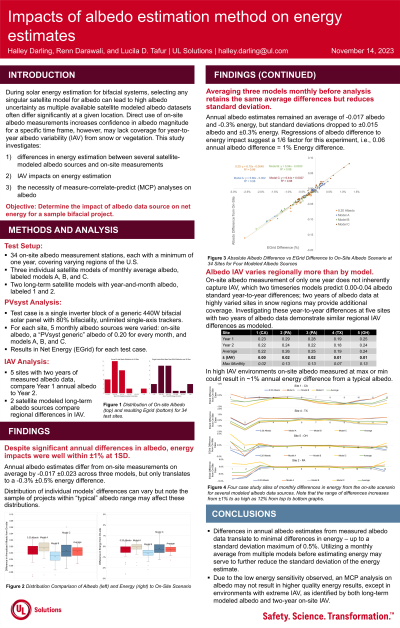Back

Solar & Energy Storage: Advancements in Modelling
Impacts of Albedo Estimation Method on Energy Estimates
Tuesday, November 14, 2023
4:15pm CST


Lucy Tafur
Solar Project Engineer
UL Solutions, New York
Presenter(s)
Presentation Description: As utility scale solar facilities employ bifacial panels in larger market proportions and across various biomes, greater scrutiny is required in determining the impacts of albedo estimation on energy gains. Current industry practices evaluate projects using a singular satellite model for albedo. Selecting any singular source can lead to high uncertainty as multiple available satellite modeled albedo datasets often differ significantly at a given location. An alternative to satellite-modeled albedo is direct use of ground measurements from on-site albedometers. Use of these on-site measurements increases confidence in albedo magnitude for a specific time frame, however, may lack coverage for year-to-year albedo variability from snow or vegetation. In this study, UL investigates (1) differences between several satellite-modeled albedo sources and on-site measurements by comparing site-specific estimates and corresponding net energy differences for a hypothetical bifacial system, and (2) impacts on energy estimation due to inter-annual albedo variability by simulating long-term estimates.
Learning Objectives:
- Estimate albedo impacts to annual energy production based on albedo model uncertainty and the relationship derived from this study between albedo and energy for a generic bifacial system.
- Identify regions of high albedo inter-annual variability and the potential differences long-term albedo may have from short term (1-2 years) on-site albedo measurements.
- Understand the benefits and pitfalls to modeled albedo versus on-site albedo and how to apply these to minimize uncertainty.

